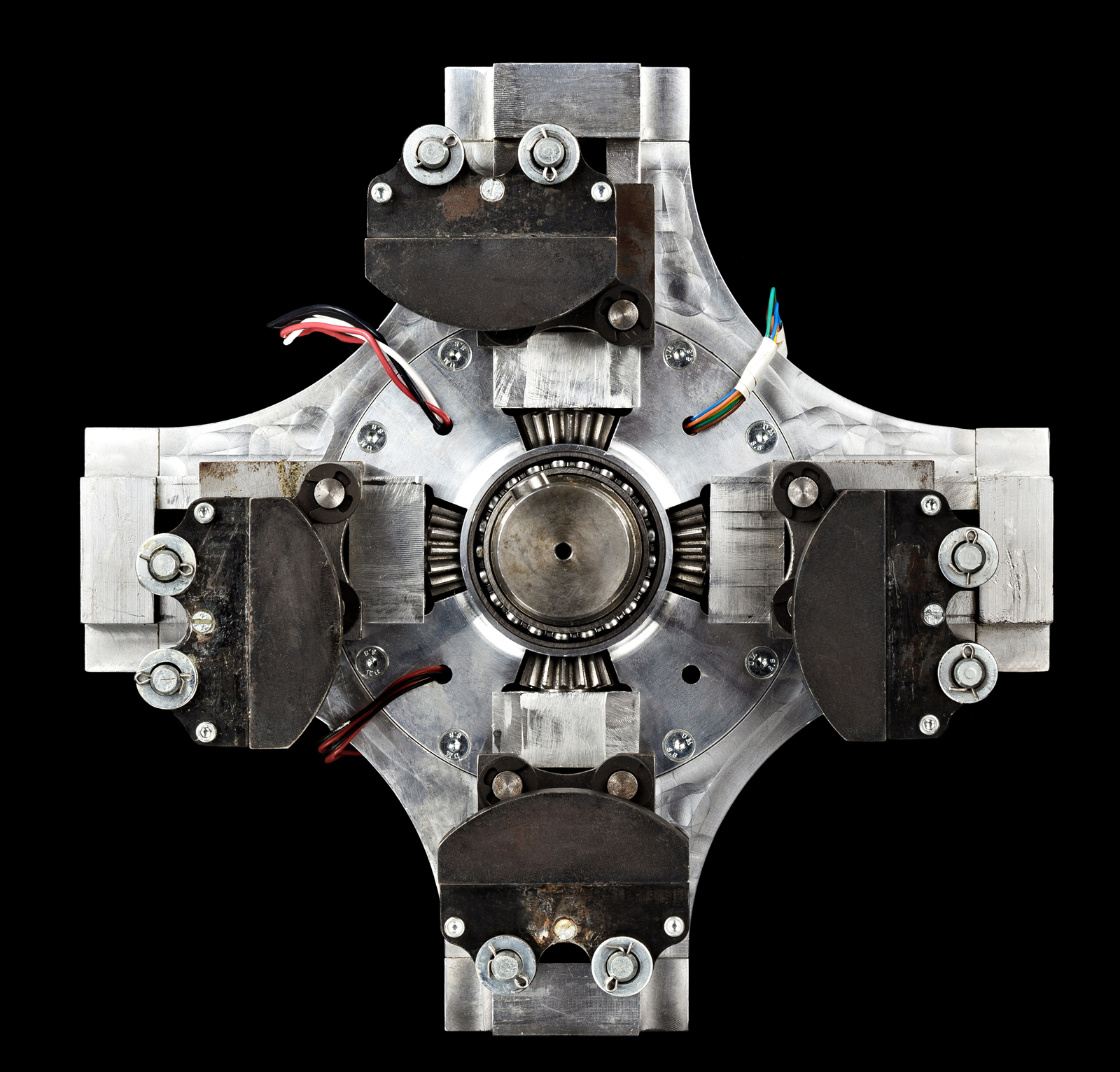Hannover Messe 2013
Improved ways to reduce engine vibrations
Driving a car at low rpms causes torsional vibrations that passengers perceive as a hum. A new type of centrifugal pendulum helps reduce these vibrations. Fraunhofer researchers will be presenting a prototype of this pendulum at the 2013 Hannover Messe from April 8-12 (Hall 2, Booth D15).

In stop-and-go traffic where drivers are forced to hit the brakes, they may forget to switch to a lower gear. When this happens, a hum can often be heard. The unpleasant noise is the result of torsional vibrations; it occurs because the rotation of the internal combustion engine’s crankshaft is never completely steady. Such torsional vibration can have a negative effect on the gearbox, and in the worst-case scenario it may even shorten the engine’s service life. This undesired effect can also occur in other types of drivetrain that are combined with internal combustion engines, for instance in ships or production equipment. In principle, there are a number of solutions available to reduce vibrations. However, more efficient motors have led to more vibrations, and this has pushed conventional solutions to their limits. For instance, the engines of passenger vehicles are increasingly being designed either with fewer cylinders or with cylinder deactivation in certain circumstances. As a result, the engine runs less smoothly and torsional vibrations are more prevalent. In ships, vibrations occur in harbors, where propulsion systems run on gas rather than crude oil or diesel in order to reduce emissions.
A centrifugal pendulum presents a possible solution for the efficient reduction of torsional vibrations. Instead of hanging from a string, the pendulum is fixed to a rotating disc. This means it is not driven by the forces of gravity, but rather by centrifugal force – and it is the level of this force that determines the frequency at which the pendulum oscillates. The pendulum’s oscillation works against the torsional moment, and this diminishes vibrations on the overall system. While the centrifugal pendulum has been used in aircraft for decades, it was first applied in cars in 2008. Until now, these pendulums have played a passive role. The engine speed determines the pendulum frequency, and the only frequency at which the pendulum can oscillate is the one set by the engine speed. Experts refer to this as the first-order oscillation frequency.
One pendulum instead of two
In addition to a number of other vibration-reducing systems, researchers at the Fraunhofer Institute for Structural Durability and System Reliability LBF in Darmstadt have now developed a semi-active pendulum. It oscillates not only at the first-order frequency, which is the frequency set by the engine speed, but also at half frequency, or at the 0.5th order. As a result, it can reduce torsional vibrations in a broader frequency range. “Our pendulum covers a frequency area that would otherwise require two pendulums: one for the first order, and one for the 0.5th order,” said Daniel Schlote, a scientist at Fraunhofer LBF. “But in a car, the available space is too small for two pendulums. This new design significantly expands the range of vibrations that can be reduced with a single pendulum.” The pendulum can be controlled in two ways. First, it can be it can be operated in an open loop control, in which case the system measures the engine speed and, based on a setpoint value determining the order that dominates at the specific engine speed, adjusts the pendulum to the dominant order and has it oscillate accordingly. Alternatively, the system can measure the vibration’s amplitude and automatically calculate which order is dominant.
LBF researchers have already come up with a prototype of the pendulum, which they will be presenting from April 8-12, 2013, at the Hannover Messe (Hall 2, Booth D15). As their next step, experts aim to make the pendulum even more compact by optimizing the switching mechanism between the first and 0.5th order.